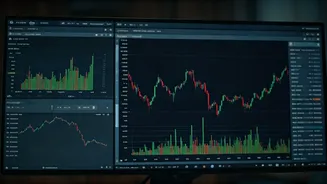Understanding Fund Performance
Fund performance is a complex metric influenced by various factors. These include the fund manager's expertise, the overall market conditions, and the specific
investment strategy. Evaluating a fund's past performance is a crucial step in the investment process, but it's important to understand that past performance doesn't guarantee future results. Investors should consider the fund's expense ratio, which reflects the annual costs associated with managing the fund. A lower expense ratio generally leads to higher returns. Additionally, examining the fund's investment objective helps align it with your financial goals. Finally, assessing the fund's risk profile, such as its volatility and the types of assets it holds, is vital for making informed decisions. By carefully examining these aspects, investors can better understand a fund's potential and suitability for their portfolios.
Identifying Top Performers
Identifying top-performing funds requires a systematic approach. Begin by reviewing historical data, such as the fund's returns over various time periods, including 1-year, 3-year, and 5-year periods. Compare the fund's performance to its benchmark index and other funds in the same category. Consider the fund's consistency of returns; a fund that consistently outperforms its peers over time is generally more reliable. Examine the fund's holdings and portfolio composition, paying attention to the sectors and companies it invests in. Check the fund manager's experience and track record. A seasoned manager with a proven history of success can be an asset. Use tools like fund screeners, which allow you to filter funds based on specific criteria like returns, expense ratios, and investment styles. Analyze the fund's risk metrics, such as its standard deviation and Sharpe ratio, to understand its risk-adjusted returns. Staying updated on market trends and fund reviews from reputable financial publications can also provide valuable insights.
Strategic Investment Choices
Strategic investment choices involve diversifying your portfolio and selecting funds that align with your financial goals and risk tolerance. Diversification helps reduce risk by spreading investments across different asset classes, sectors, and geographical regions. Consider investing in a mix of equity funds, which offer the potential for high growth, and debt funds, which provide stability and income. Assess your risk tolerance and invest in funds that match your comfort level. If you have a high-risk tolerance, you might allocate more to equity funds. If you have a low-risk tolerance, consider a more conservative approach with a higher allocation to debt funds. Regular monitoring and rebalancing of your portfolio are essential to ensure it stays aligned with your goals. Rebalancing involves selling assets that have performed well and buying those that have underperformed, which helps maintain your desired asset allocation. Stay informed about market conditions and adjust your investment strategy as needed. Consider consulting with a financial advisor for personalized advice.
Impact of Market Trends
Market trends significantly influence fund performance. Economic indicators, such as inflation rates, interest rates, and GDP growth, impact the performance of various fund types. Rising interest rates can negatively affect bond funds, while strong economic growth can benefit equity funds. Geopolitical events and global economic conditions also play a crucial role. Events like trade wars, political instability, and changes in government policies can influence market sentiment and asset prices. Staying informed about these trends is important for making informed investment decisions. Analyze market news, economic reports, and expert opinions to anticipate potential impacts on your investments. Consider the impact of sector-specific trends. For instance, advancements in technology or changes in consumer behavior can affect the performance of sector-specific funds. Adapt your investment strategy to navigate market volatility. During periods of market downturn, consider strategies like dollar-cost averaging, which involves investing a fixed amount at regular intervals, to mitigate the impact of price fluctuations. Maintain a long-term perspective and avoid making impulsive decisions based on short-term market movements.
Long-Term Financial Success
Achieving long-term financial success requires a disciplined and patient approach to investing. Set clear financial goals and create a detailed investment plan aligned with these objectives. Regularly review and update your plan to ensure it remains relevant. Embrace a long-term investment horizon and avoid trying to time the market. Consistent investing over the long run, even during market fluctuations, can lead to substantial returns. Focus on the power of compounding, which allows your earnings to generate further earnings over time. Keep emotions in check and avoid making investment decisions based on fear or greed. Understand that market corrections are normal and temporary. Diversify your portfolio to reduce risk and protect against significant losses. Consider the importance of tax-efficient investing and explore options like tax-advantaged accounts to minimize your tax liability. Stay informed, continuously learn about financial markets, and seek professional advice when needed. Embrace a proactive approach to managing your investments and regularly monitor your portfolio's performance, making adjustments as necessary to stay on track towards your financial goals.











